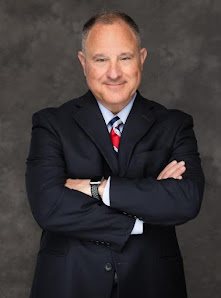Across the nation officials are closing prisons as crime rates drop and views about drug use change, but not in Nebraska, where the governor is pushing for a new $230 million prison to relieve overcrowding and house a steadily rising inmate population, reported The Associated Press.
It’s not certain that lawmakers will support
Republican Gov. Pete Ricketts’ plan to build a 1,512-bed maximum security
prison, but the fact that the state is considering what would amount to a 37%
increase in bed space runs counter to most states.
Sen. John McCollister, who has introduced bills this
year to try to steer more inmates into rehabilitation programs, said he can’t
understand it.
“It’s too bad
Nebraska hasn’t learned from the experiences of other states,” McCollister
said. “We’re definitely going against the grain.”
As Nebraska is seeking to expand its prison
capacity, other states are taking a different approach.
California plans
to shutter one prison this year that holds about 1,500 inmates and
another as early as 2022, partly in response to state budget cuts. Connecticut
plans to close two facilities as the state’s prisoner population fell to its
lowest level in three decades.
In 2019, Republican-led Missouri closed one
of its maximum-security prisons for an estimated $20 million savings,
after cutting the possible prison time for nonviolent drug offenses and
allowing parole for more nonviolent offenders.
Similar attempts to reduce Nebraska’s prison
population have repeatedly stalled because of opposition from prosecutors and
law enforcement. Nebraska’s attorney general has argued that most of those
serving mandatory minimums in Nebraska are repeat offenders or have committed
major drug crimes, such as manufacturing large amounts of methamphetamine.
Offenders who aren’t ready for living within the law
end up committing serious crimes, including home-invasion robberies and murder,
and must be kept away from the public, prosecutors said.
“You’ve got to work pretty hard to end up in prison
on just a possession case,” said Lancaster County Attorney Pat Condon. In most
drug cases, “you’re given several opportunities to turn things around.”
Ricketts and other top officials recently announced
a new effort to try to learn why Nebraska’s prison population has grown.
But Ricketts acknowledged it’s “very unlikely” that
Nebraska will be able to close prisons as it strives to ease overcrowding. At a
minimum, he said, the state needs to replace its oldest prison, the Nebraska State
Penitentiary, built in 1869.
“We all know that we are facing a number of
different challenges,” he said.
Nebraska had the nation’s second-most crowded
prisons as of 2019, according to federal statistics, with 5,500 inmates held in
facilities designed for 4,050. Corrections officials project the inmate
population will climb to 6,438 by 2025. The state has 10 prisons, but hasn’t
opened a new facility since 2001.
Nebraska’s inmate population grew 27% between 2009
and 2019, while the state’s overall population rose by 7%.
The increase is driven by several factors, including
a large number of former inmates who violate their parole, said Scott Frakes,
director of the Nebraska Department of Correctional Services. Frakes said state
laws that create new crimes also contribute to the growth.
“Maybe it leads to another five or ten people coming
to prison — but as you accumulate that over the years, it leads to our current
rate of incarceration,” Frakes said.
One study found that of 1,050 Nebraska inmates
paroled in 2016, 429 later returned to prison, mostly for technical violations,
such as associating with other felons or drug use. Many inmates fail to
complete their drug abuse treatment or other programs, officials said.
To read more CLICK HERE








No comments:
Post a Comment